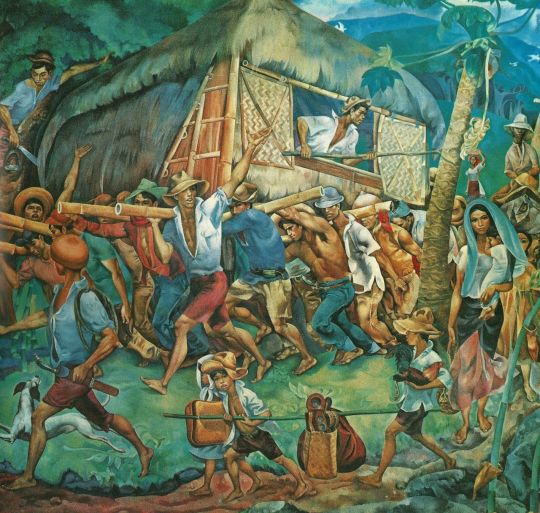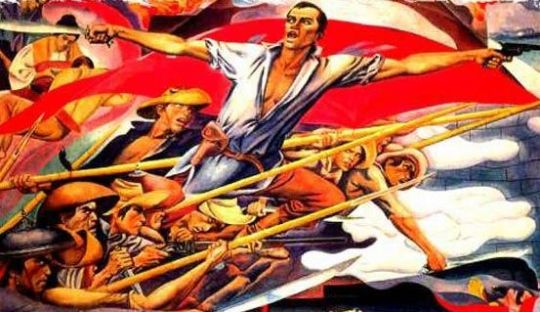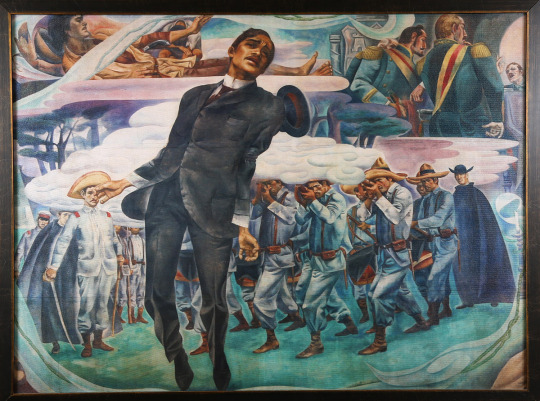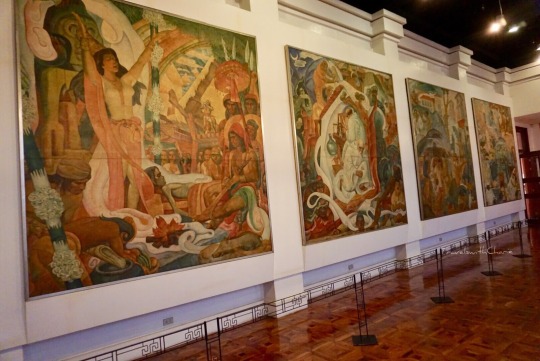#how to restore call history from mi cloud
Explore tagged Tumblr posts
Text
Les Mis Hidden Name Meanings: “Fantine” (posting here because it got popular on TikTok)
Every character in Les Mis has a name with a deeper symbolic meaning— here’s a video I made for the official @barricadescon TikTok about the meaning behind “Fantine!”
Transcript and Digressions I left out of the video, under the cut:
Every charcater’s name in Les Mis is either a pun, a reference to a historical/mythological figure, or had some deep symbolic meaning — and sometimes it’s all of them at on.
The name “Fantine” comes from the french word “enfantine” or “childike, infant-like.” Her name basically means “Baby.” And obviously this speaks to her innocence and niavetee. But also “baby” is kind of,.,, well it sounds more like an informal term of endearment than an actual legal name?
And that’s because– Plot twist– Fantine isn’t her legal name! What is her legal name? She doesn’t have one.
And the reason she doesn’t have one is directly tied to political turmoil of the era she was born into.
Fantine grew up an orphan living on the streets, without a family without parents. Hugo tells us the origin of her name:
“she bore on her brow the sign of the anonymous and the unknown. (...)She was called Fantine. Why Fantine? She had never borne any other name. At the epoch of her birth the Directory still existed. She had no family name; she had no family; no baptismal name; the Church no longer existed. She bore the name which pleased the first random passer-by, who had encountered her, when a very small child, running bare-legged in the street. She received the name as she received the water from the clouds upon her brow when it rained.”
This moment is adapted beautifully in the Manga adaptation by Takahiro Arai, which I recommend to anyone who loves Les mis, manga, or any combination of those things.
But now let’s talk about the Directory.
To wildly oversimplifly a lot of complex history: Before the French Revolution, the Catholic Church’s records of baptismal ceremonies were often used as a registry of people’s legal names. During the French Revolution, the Revolutionary government– including the Directory– put in place a series of policies we now call “dechristianization,” where they attempted to dismantle the power of Catholic church.
Fantine was born during the age of these dechristianization policies. So she was never baptised, her baptismal name was never recorded, so she has no recorded legal or family name. She’s slipped through the cracks of the legal system, and ended up completely anonymous.
It sets Fantine up as this anonymous child of the Revolution– a stand in for everyone who was left behind when the Revolution was left behind, and kings were restored to the throne.
Fantine’s namelessness is meant to show atomized . How she has NO support system. She has nothing to connect her to other people, nothing to connect her to a support system.
Finally, the way Fantine tends to “slip through the cracks” is something that follows her throughout her life. When she’s fired from her job at a factory, Maroy Madeleine never learns of it– Fantine has this tendency to overlooked and forgotten. She is born anonymous and she dies anonymous. At the end of the story, she is buried in an unmarked grave, with not even the name “Fantine” on her headstone.
It ties into novel’s questions about which people we consider worth remembering, whose lives are worth being records.
And obviously Fantine is not the only character in Les Mis whose name has a deeper symbolic meaning. If you have any other Les Mis character names you’d like to explain, leave their name in the comments below.
Thank you for watching!
From the description of the original tiktok, here are some things that were left out of the video for time:
How this all relates to Cosette’s name(s)
Fantine’s nickname “The Blonde,” and how this relates to the way she’s dehumanized by Tholomyes
How the 2018 Bbc series fundamentally misunderstands Fantine’s character, and how one sign of this is that they give her a full legal first and last name
How Fantine’s name shows up/is revealed is significant parts of the story (like when Valjean reveals her signature on a letter to Thenardier, allowing him to take Cosette away)
How Fantine’s inability to write ties into the way it’s difficult for her to record her own story
How some of Valjean’s last words are revealing Fantine’s name to Cosette
Thanks again for reading!
449 notes
·
View notes
Text
Tricks to recover corrupted data from Xiaomi Poco F1 phone
If you are suffering from data corruption from Xiaomi Poco F1 phone then download the Xiaomi Android Data Recovery Software to recover them easily. Download it now. For more information then visit us at https://www.ehowcani.com/recover-corrupted-data-from-xiaomi-poco-f1
#fonedog android data recovery for windows#how to restore call history from mi cloud#how to backup call recording in mi#how to recover call recording in mi#miui call log#recover corrupted data from Xiaomi Poco F1#Xiaomi Poco F1#Xiaomi Poco F1 Recovery#Xiaomi Poco F1 Data Recovery#Xiaomi Android Data Recovery Software#Xiaomi Android Data Recovery
0 notes
Photo






The pictures above are documented in chronological order (aside from the title photo). I. A documentation in photograph of 5 paintings by the Filipino painter Botong Francisco with proper labeling and citation(s) according to the Harvard citation format and 2) a formal description of each of the 5 selected paintings. To describe, emphasize the beauty of the work(s).
1. Bayanihan
(Pinoy Art Hub, 2018)
Bayanihan by Carlos “Botong” Francisco exemplifies one of the famous cultures in the Philippines which is Bayanihan that has a root word of “Bayani” which simply means “Hero”. With this, this painting shows a hero to one another. During early times, people would carry houses to change places to relocate a neighbor because of a natural calamity or simply to move places. According to Pinoy Art Hub (2018), this is done by gathering enough people from the same neighborhood to carry a Bahay Kubo or a nipa hut.
Aside from this, they place bamboo poles lengthwise in order to carry the house and whoever helped during the process is called to be heroes to the society. This painting conveyed vivid colors to portray the colorful life and culture that the Philippines has. Emphasizing the size of Bahay Kubo lets the viewers know how hard it is for the people to carry. To show that there is Bayanihan, the painting shows numerous people that helped and to shows a neighborhood helping one another.
________________________________________________________________
2. Katipunan
(Deroca, 2015)
Katipunan by Carlos “Botong” Francisco exemplifies a historic revolutionary in the Philippines. As seen in the painting, it is Andres Bonifacio and his KKK members going into the revolution with the KKK flag. There are also women in the upper left corner that shows them treating their husbands from the revolution. Andres Bonifacio was holding an itak or a small sword and a gun on the other hand. While the other man was holding their choice of weapon.
There is a fire above the painting that shows the fiery revolution against the Spaniards. This painting shows an asymmetrical balance because Andres Bonifacio was only one emphasized and the other men were as almost the size of Andres Bonifacio to show who were the main people during the revolution. Aside from this, when you look at the painting the color of the KKK flag can be easily be spotted because of the darkness of the color red. This shows also a value of variety with its overlapping of objects and sizing.
________________________________________________________________
3. The Martyrdom of Rizal
(Fabros, 2014)
The Martyrdom of Rizal Mural, completed in 1960, is one of Carlos “Botong” V. Francisco's most well-known works. He was proclaimed the Philippine National Artist for Visual Arts in 1973. Francisco is best known for his monumental murals portraying historical events in the Philippines. The mural portrays the execution of Philippine national hero Dr. Jose Rizal on December 30, 1896, at Bagong Bayan (now Rizal Park). Fort Santiago commissioned the mural as part of the Rizal Shrine. Rizal's death was a momentous date in our nation as it culminated nationalism and some kind of social change or redemption in our societies as a community.
Jose Rizal's final moments before his execution are depicted in the painting in five (5) significant images: (1) The Trial of Rizal (2) Rizal's Last Farewell (also depicted in Rody Herrera's oil on canvas painting "Huling Paalam," which was awarded First Place in the Jose Rizal Centennial Painting Competition in 1961). (3) Rizal composed the farewell poem Mi Ultimo Adios (My Last Farewell) Rizal's Last Walk and Rizal's Execution in Bagumbayan are two of his most famous works.
________________________________________________________________
4. Magpupukot
(Pinoyartshub, 2018)
"Magpupukot,” which basically means to "Pulling in the Net," is one of Botong's most well-known works. The scene depicted in the painting shows a group of fishermen practically casting and dragging their nets in while sailing inside a small wooden kayak boat, obviously taking the opportunity to haul in the day's catch. As a result, it was thought to be inspired by his hometown of Angono, Rizal, where a fishing village was located near their home. Botong's favorite subjects to paint were the lives of the fisheries sector. The Filipino people's deeply held values and rituals have become a medium for him, allowing him to use his unique style to create new imagery.
This fascination with history piqued his interest in learning more about the Filipino past, which provided him with useful information. Warm tones are used in the drawing, giving it a pleasing saturation. His visual enactments honor his culture's creative origins, and his photographs are inspired by the Filipino people's zealous commitment and vibrant colors. _______________________________________________________________
5. The Progress of Medicine in the Philippines
(TravelswithCherie, 2018)
The Progress of Medicine in the Philippines is a set of four oil paintings on canvas commissioned for the main entrance hall of the Philippine General Hospital in Manila by Philippine National Artist Carlos V. Francisco in 1953. (Barns, 2016). The artworks were in "serious decay" at the turn of the century due to heat, humidity, dirt, dust, smoke, insect stains, grime, termites, and an oxidized synthetic resin used in an earlier restoration due to their location. These canvases have been restored three times, the most recent in 2006, with funding provided by the US Department of State's Ambassadors Fund for Cultural Preservation. The paintings were loaned to the National Museum of the Philippines by PGH and the University of the Philippines in 2010, so they could be exhibited in a stable manner and properly preserved.
Predicated on our analysis, the first painting portrays a pre-colonial Philippines babaylan (female shaman) leading a healing ceremony with her hands raised. The villagers are assembled all around the sick man, led by their chief, and a fire is lit for the pig's sacrificial offering (lower right corner in foreground). The arrival of the Spaniards in the Philippines is depicted in the second painting, which features two monks. They are the painting's key figures. The third painting depicts a scene from the American Period in which two men hide under a plant to avoid being inoculated, while a group of men in the foreground gather dead rodents after fumigation. The fourth painting depicts the defining features of modern medicine, such as surgery, radiation, laboratory research, medical equipment, and hospitals. Botong uses common elements like flora and clouds to link the four tables. _______________________________________________________________ Source(s): Barns, J., (2016). Carlos V. Francisco's The Progress of Medicine in the Philippines: Renegotiating decisions and collaborations in conservation. Taylor & Francis. Available at: https://www.tandfonline.com/doi/abs/10.1080/10344233.2016.1206297?journalCode=ybac20 [Accessed April 29, 2021].
Deroca, F. (2015). Individual Activity #3. [online] Medium. Available at: https://medium.com/@franzderoca/bonifacio-mural-by-carlos-v-francisco-8d6abe07c510 [Accessed 19 Apr. 2021].
Fabros, D., (2014). Martyrdom of Rizal Mural - Philippine Folklife Museum Foundation: San Francisco, Ca. Philippine Folklife Museum Foundation | San Francisco, Ca. Available at: https://philippinefolklifemuseum.org/exhibit-rizal-martyrdom-botong-francisco/ [Accessed April 29, 2021].
Pinoy Art Hub. (2018). BAYANIHAN by Carlos “Botong” Francisco. [online] Available at: https://httppinoyartshub.wordpress.com/2018/01/07/bayanihan-by-carlos-botong-francisco/ [Accessed 19 Apr. 2021].
Pinoy Art Hub, (2018). Magpupukot by Carlos V. Francisco. Available at: https://httppinoyartshub.wordpress.com/2018/01/12/magpupukot-by-carlos-v-francisco/ [Accessed April 29, 2021].
TravelswithCherie, (2018). The Art of Carlos Botong Francisco - Progress of Medicine in the Philippines. Available at: https://www.travelswithcharie.com/2018/07/the-art-of-carlos-botong-francisco.html [Accessed April 29, 2021].
10 notes
·
View notes
Text
Pulp Non-fiction
A story (but careful, there’s a twist):
In 1998 the Costa Rican Sala Cuarta (their highest judicial body) issued a ruling against a company that had dumped 12,000 tonnes (más o menos) of waste orange peels in one of the country’s flagship protected areas, Área de Conservación Guanacaste (ACG). The ruling came at the urging of a prominent Costa Rican environmentalist, and studies had found elevated levels of d-limonene--a suspected carcinogen--in local waterways as a result of the company’s actions, raising tensions with neighboring Nicaragua over the possible pollution of their downstream eponymous lake. The court ruling demanded the immediate removal of the orange peels from where they lay--a site that some had labeled ‘an open air dump.’
A simple case environmental criminals brought to justice?
Despacito, mis amigos.
A keen observer at the time would have noted one immediate hiccup with the court’s order: those 12,000 tonnes of orange waste? They didn’t exist anymore.
Six months of unfathomable ecstasy on the part of four species of flies had converted the mega pile o’ peels into several inches of black, loamy soil, smothering the invasive African grass that had previously dominated the heavily degraded corner of the national park. Oh, and d-limonene? Turns out it’s more of a cancer-fighter than a cancer-causer*, and can now be purchased on Amazon for $0.16/gram (note I do NOT endorse herbal supplements as a general rule--talk to your doctor if you or your transgenic rat suffer from mammary carcinomas).
See, the orange peel dumping was actually part of a grand plan hatched by rockstar ecologist turned conservationist, Dan Janzen (best known for his hit singles like ‘Herbivores and the Number of Tree Species in Tropical Forests’ and ‘Why Mountain Passes Are Higher in the Tropics’, but I prefer his deep tracks ‘How to be a fig’ and ‘Mice, big mammals, and seeds: it matters who defecates what where’). He and his partner Winnie Hallwachs had noted the following upon observing the development of a huge new orange juice processing facility on ACG’s northern border by a company called Del Oro: (1) most people don’t like peels in their orange juice, (2) megatonnes of orange peels probably weren’t the easiest thing to deal with on the cheap, and (3) of the 170,000+ species of creature in ACG’s forests, at least one probably would chow down on some citrus rind. Upon discovering that Del Oro planned to construct a multi-million dollar plant to turn their waste into low-grade cattle feed, Dan and Winnie engineered the following plan:
1. Dump orange peels on former cattle ranches recently incorporated into ACG. 2. Fly orgy. 3. … 4. Profit.
Amazingly this plan nearly worked perfectly! Del Oro was all over the idea of getting a little weird with ACG. After a promising test deposition of 100 truckloads of orange peels in 1996, Del Oro and ACG signed a contract wherein the park would provide waste disposal (and interestingly, formalized water provisioning and pest management ecosystem services that Del Oro enjoyed by virtue of being neighbors with a fat block of mountainous rain-, cloud- and dry forest) in exchange for donating a huge amount of still-forested land that they owned on the ACG border. Janzen threw in some ecological consultation and help in getting eco-friendly certifications as a sweetener. A seeming beautiful win-win deal.
But of course, we can’t have nice things.
You may have already pieced together what happens next: after executing the first year of the contract wherein Del Oro trucked in ~12,000 metric tonnes of peels and pulp into a heavily degraded corner of ACG that was seemingly caught in a state of arrested succession, a rival orange juice company caught wind of the party, and did as one does when they get spurned by a guest list omission: they sued.
And won.
:(
What seemed to get lost in the debates that raged at the time though, was what effect all these orange peels would have on the forest itself. Dan and Winnie had the intuition that killing off the fire-prone grass and adding nutrients to a plot of land that had been continuously trampled by bovid beasties for a couple hundred years would be a positive change for an aspiring forest, but that wasn’t a certainty.
After the fallout from the lawsuit and the court ruling, it’s understandable that Dan, Winnie, and ACG’s staff didn’t want to draw too much attention to the site (a couple of ACG officials nearly were thrown in jail for failing to adhere to the court order). They visited a few times early on to photograph the progress, and sent a botanist in the very early years to write down what species of plants were occurring in the fertilized area and the surrounding pasture, but other than that the project was more or less consigned to the quirky annals of ACG history (alongside such fascinating historical tidbits as a starring role in the Iran-Contra Affair--you should all read Green Phoenix by Bill Allen for the full fascinating history of the park).
The reason I’m relating this story is that some collaborators and I started revisiting this site a few years ago, and we were so blown away by what we saw that we had to tell the world. The area where the orange peels had been? It had become just about the lushest forest I’d ever seen. Literally vines on vines on vines. And the surrounding pasture? Still pretty much looked the same as in old photos.
In the summer of 2014, I set up Princeton senior thesis student Jon ‘call me Chinito again, Sr. Policia, and I’ll gouge your eye out with a soil corer’ Choi at the site, and let me just say, he scienced the crap out of it.** We set up some vegetation transects and developed a soil sampling regime, and then he went full Tasmanian Devil in a labcoat. We’re talking camera traps, audio recorders, pitfall traps, and theoretical modelling of ecological state transitions--the whole nine meters. It truly impresses me that he managed to say so much about what ultimately boils down to a very simple observation: orange peels jump-started forest recovery--where there would otherwise be a stunted savanna, there’s now forest so thick you literally have to hack your way through with a machete.
After a few years of trying to distill this work into something palatable to reviewers, journal editors, and our team of co-authors, we are proud to finally drop our LP: ‘Low-cost agricultural waste accelerates tropical forest regeneration,’ available exclusively from our record label, Restoration Ecology.
In all seriousness, I really do believe there’s an incredibly exciting idea at the core of this project: it wasn’t just a win-win initiative. It was win-win-WIN. Carbon was sucked out of the atmosphere, biodiversity was increased, and soil quality improved. All FOR A PROFIT! Despite this, we couldn’t find a single other example of ag waste being used to speed forest recovery. We hope that changes. The world really shouldn’t contain both nutrient-starved degraded lands and nutrient rich-waste streams.
*See Asamoto et al. 2002 Mammary carcinomas induced in human c-Ha-ras proto-oncogene transgenic rats are estrogen-independent, but responsive to d-limonene treatment. Japanese Journal of Cancer Research
**Jon managed to do all this despite having to commute daily from the opposite side of the 140,000 ha ACG, passing each morning or afternoon through two casually racist police checks. He sure earned those senior thesis awards!
0 notes